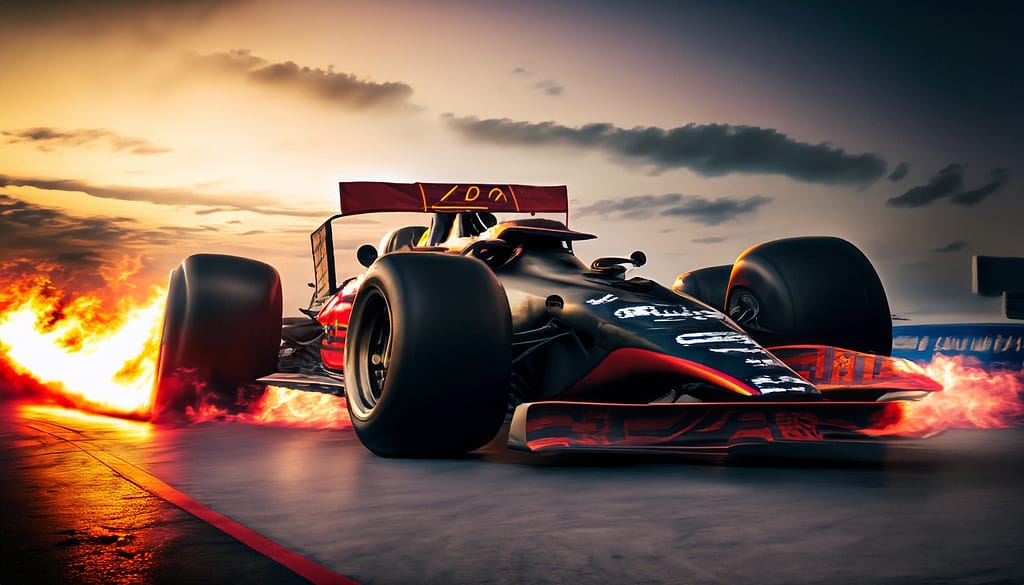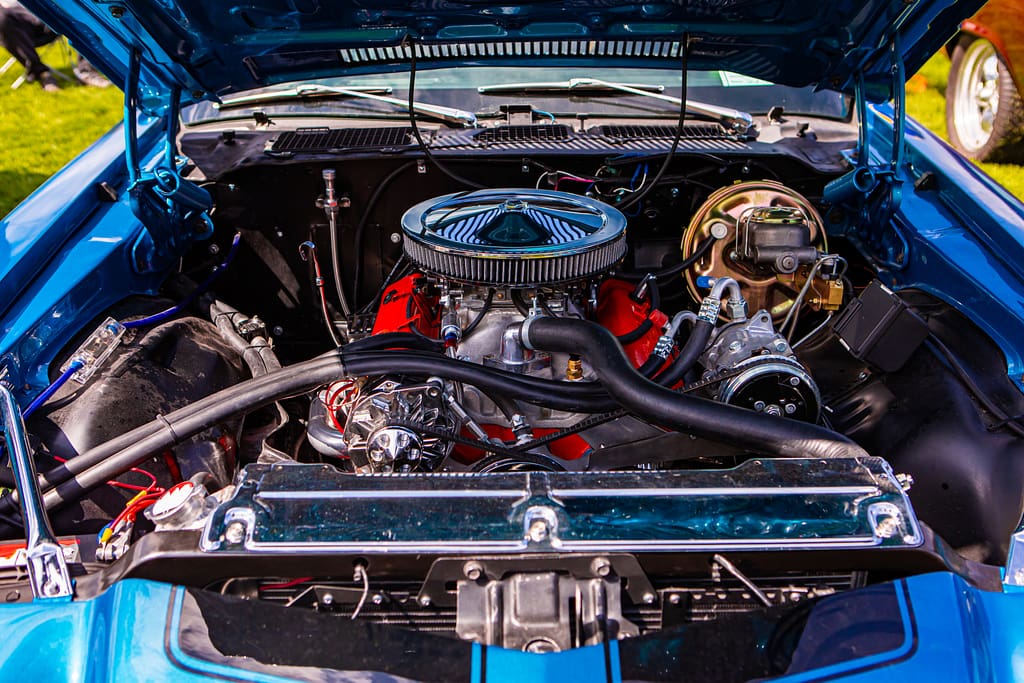Performance, Safety, Innovation
Discussing Nitrous Oxide Systems (NOS) can be intriguing and informative. Here are some topics and questions to explore:
1. Mechanics and Performance
Unveiling the Secrets of Nitrous Oxide Systems (NOS) in Automotive Performance
Engines that roar, tires that screech, and an adrenaline rush that defies description—welcome to the exhilarating world of automotive performance. At the heart of this world lies a technology that has become legendary among enthusiasts: Nitrous Oxide Systems, or NOS. Today, we embark on a journey to unveil the secrets of NOS, delving deep into its mechanics and the electrifying performance it offers.
The Magic Behind NOS
At first glance, NOS might seem like a magician’s trick, mysteriously boosting engine power at the push of a button. However, the magic behind NOS lies in its straightforward yet ingeniously engineered mechanics. Here’s a breakdown of how it works:
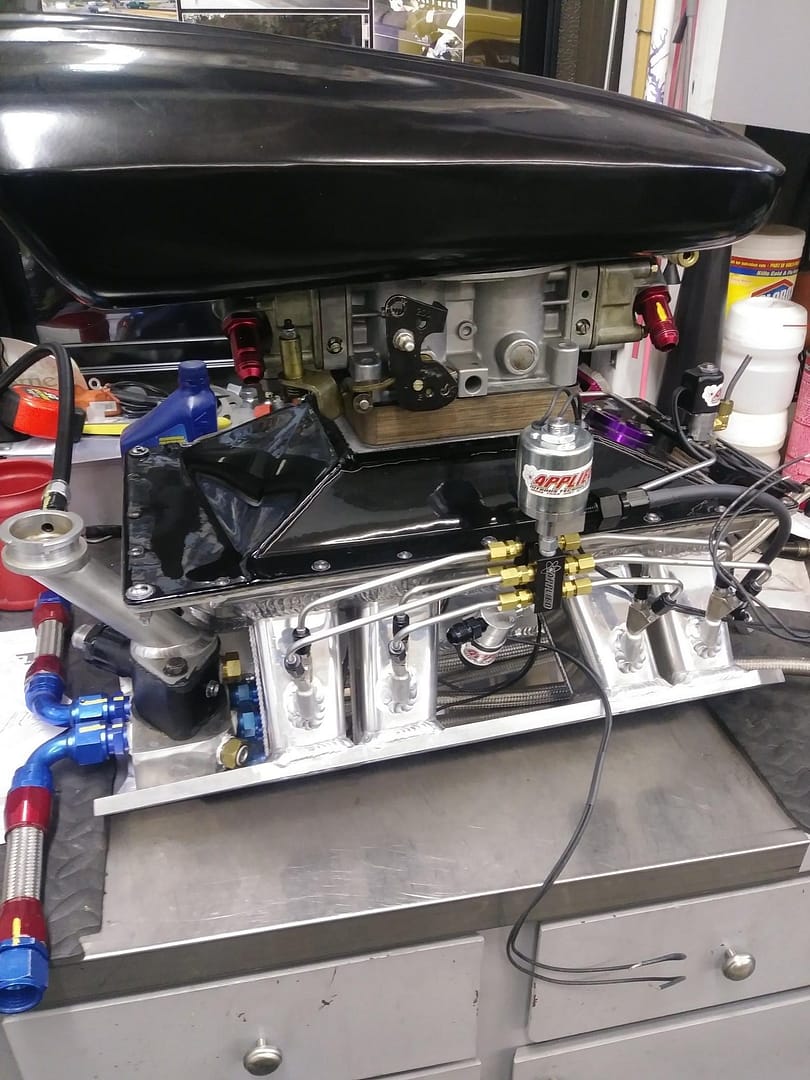
- Nitrous Oxide (N2O): This colorless gas is the star of the show. It’s stored in a high-pressure tank, waiting for its moment to shine.
- Phase Change: When N2O is released from the tank into the engine, it undergoes a rapid phase change, transitioning from a liquid to a gas. This process absorbs heat from its surroundings, which has a chilling effect.
- Oxygen Boost: As N2O transforms into a gas, it chills the incoming air, making it denser. This increased density means there’s more oxygen available for combustion.
- Fuel Injection: NOS doesn’t work alone; it needs a partner in crime—fuel. Additional fuel is injected simultaneously with N2O to create a perfectly balanced air-fuel mixture, one that’s ideal for combustion.
- The Result: With a richer air-fuel mixture and an abundance of oxygen, combustion becomes more potent, producing a surge in horsepower and torque. It’s like giving your engine a shot of adrenaline, propelling your vehicle forward with a newfound ferocity.
Components That Make It Happen
- Nitrous Oxide Tank: The heart of the system, where N2O is stored under high pressure.
- Solenoids or Valves: These regulate the flow of N2O into the engine, ensuring precise control.
- Delivery Lines: The arteries that carry N2O and fuel from the tank to the engine.
- Nozzles: These inject the N2O and fuel into the engine’s intake tract, where the magic truly begins.
To make this magic happen, a NOS system relies on several key components:
The Art of Balance
Now, here’s the catch: the art of maximizing NOS performance lies in striking the perfect balance. Too much N2O or fuel, and you risk damaging your engine. Too little, and you won’t tap into its full potential. It’s a delicate dance between power and precision.
Factors to Consider:
- Engine Displacement: Larger engines may require more N2O to achieve significant gains, but it’s all about finding the sweet spot.
- Modifications: If you’ve already made aftermarket modifications to your engine, you’ll need to factor those in when determining the ideal NOS setup.
- Desired Power Increase: How much extra power do you want? It’s crucial to have a clear goal in mind.
The Role of Tuning
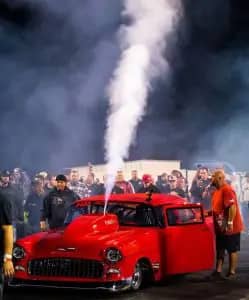
Tuning is the secret sauce in the NOS recipe. It involves fine-tuning various parameters like ignition timing, fuel delivery, and N2O shot size to achieve the perfect balance of power and safety. Dyno testing and data logging become invaluable tools in this process, helping you refine your NOS system’s performance.
Conclusion
Nitrous Oxide Systems are more than just a bolt-on accessory; they’re a gateway to unlocking the true potential of your engine. When understood and tuned correctly, NOS can transform your ride into a high-performance beast, offering exhilarating speed and power at the push of a button. It’s the magic behind the madness of automotive performance, and now, you’re in on the secret.
2. Safety and ReliabilityNavigating the Fast Lane: Safety and Reliability with Nitrous Oxide Systems (NOS)
In the world of automotive enthusiasts, the pursuit of power and speed is a thrilling journey. For many, Nitrous Oxide Systems (NOS) are the turbocharger of choice, offering a dramatic boost in engine performance. However, with great power comes great responsibility. This article is your guide to safely navigate the fast lane with NOS, emphasizing the paramount importance of safety and reliability.
The Power and the Risks
NOS is a potent ally when it comes to extracting extra horsepower from your engine. By injecting a mixture of nitrous oxide (N2O) and additional fuel, you can experience exhilarating gains in power and torque. But like any power-enhancing technology, it carries inherent risks that must not be overlooked.
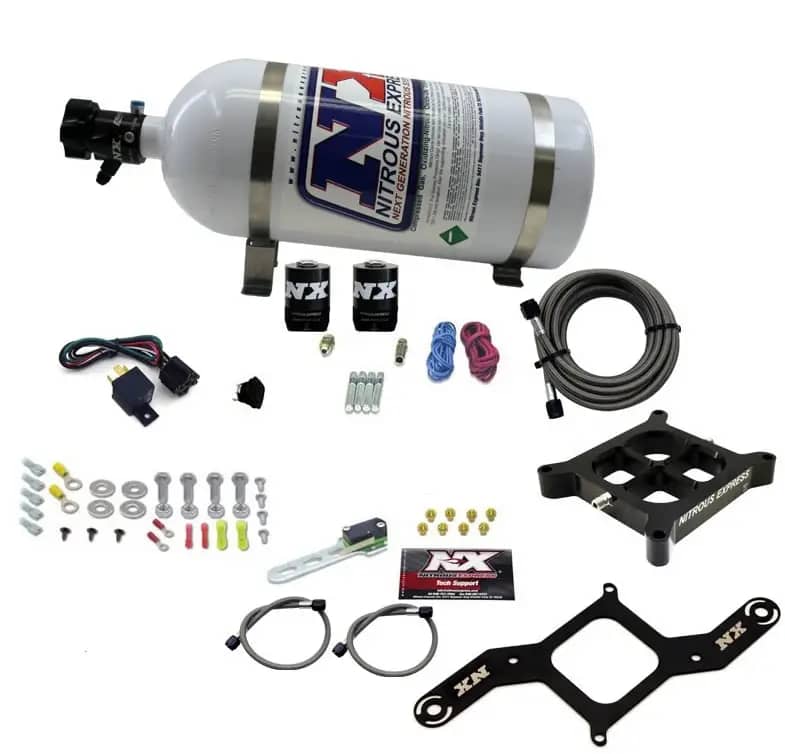
Safety Precautions: A Must-Have
Safety is the foundation of every successful NOS adventure. Here are some critical precautions:
- Quality Components: Start with high-quality NOS components from reputable manufacturers to ensure system integrity.
- Secure Installation: Proper installation by experienced technicians is non-negotiable. A secure installation minimizes the risk of leaks or malfunctions.
- Regular Maintenance: Routine inspections and maintenance checks are vital to keep your NOS system in top shape.
- Monitoring Tools: Consider investing in monitoring tools like a wideband oxygen sensor or a bottle pressure gauge to keep tabs on system performance.
The Engine’s Longevity: Balancing Act
The allure of extra horsepower can sometimes overshadow the importance of engine longevity. Enthusiasts must strike a careful balance between extracting performance and preserving the engine’s health. Here’s how:
- Moderation: Resist the temptation to use NOS excessively. Regular, prolonged usage can accelerate engine wear and tear.
- Correct Fueling: Ensure proper fuel enrichment to maintain the ideal air-fuel ratio during NOS activation. This prevents engine damage due to overly lean conditions.
- The Role of Timing: Timing is crucial in preventing engine detonation. A slight retardation of ignition timing during NOS activation can provide a safety net.
The Engines That Last
Reliability is the hallmark of a well-maintained NOS system. It’s what separates engines that endure from those that suffer. Here are some tips to enhance reliability:
- Safety Switches: Install safety switches like a window switch or a wide-open throttle switch to ensure NOS activation only occurs under safe conditions.
- Heat Management: Address heat management to prevent excessive cylinder temperatures during NOS usage. This can be achieved through improved engine cooling systems or nitrous-specific intercoolers.
- Detonation Control: Employ strategies like the use of high-octane fuel or water-methanol injection to control detonation under high-stress conditions.
The Responsible NOS Enthusiast
In the world of NOS, being a responsible enthusiast is not just a choice—it’s a commitment. It means understanding the technology, respecting its power, and prioritizing safety and reliability at all times. Here’s a final word of advice:
- Education: Never stop learning. Continually educate yourself about NOS technology, installation, and tuning techniques.
- Legal Compliance: Abide by local laws and regulations concerning the use of NOS, especially on public roads.
- Community Support: Engage with the NOS community to share experiences, learn from others, and promote responsible usage.
Conclusion
Nitrous Oxide Systems offer the thrill of incredible power gains, but they demand respect and responsibility. Safety and reliability are not negotiable aspects of NOS usage. By following best practices, staying informed, and putting safety first, you can confidently navigate the fast lane of automotive performance with NOS, enjoying the power without compromising your engine or your safety.
3. Tuning and Optimization
Tuning Perfection: Maximizing Nitrous Oxide System (NOS) Performance
In the realm of automotive enthusiasts, Nitrous Oxide Systems (NOS) are renowned for their ability to unleash a surge of power at the push of a button. However, this exhilarating power boost is not simply a plug-and-play affair. Tuning and optimization play a pivotal role in extracting the full potential of NOS. In this article, we dive deep into the art of tuning and the science of optimization to help you achieve NOS nirvana.
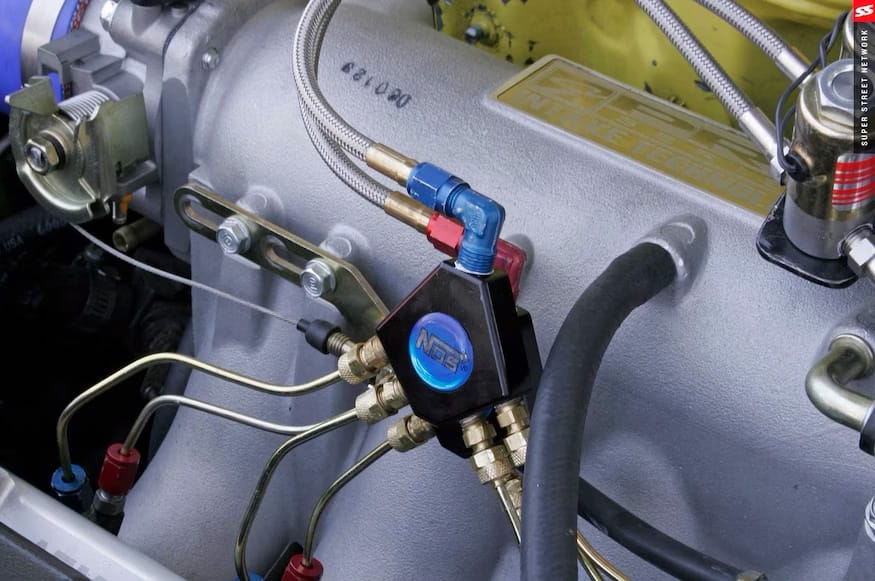
The Precision of Tuning
Tuning a vehicle with a NOS system is akin to fine-tuning a musical instrument—every adjustment matters and precision is key. Here’s a closer look at the elements of NOS tuning:
1. Shot Size Calibration:
- Engine Displacement: Larger engines may require a bigger “shot” of N2O to achieve substantial power gains, while smaller engines should opt for a more conservative shot size.
- Existing Modifications: Aftermarket modifications like camshafts, headers, and exhaust systems impact your engine’s behavior. Take these into account when determining the ideal shot size.
- Desired Power Increase: Clearly define your power goals. Do you want a modest bump in horsepower or an adrenaline-pumping surge?
2. Fuel Enrichment:
- Maintaining the Air-Fuel Ratio: Achieving the right air-fuel mixture during NOS activation is crucial for preventing engine damage. Extra fuel must accompany the extra oxygen from the N2O.
- Fuel Delivery Precision: To ensure precise fuel delivery, consider larger injectors, a standalone fuel management system, or an adjustable fuel pressure regulator.
3. Ignition Timing:
- Preventing Detonation: Retarding ignition timing slightly during NOS activation helps prevent detonation, a condition where an air-fuel mixture ignites prematurely and can damage the engine.
- Optimal Calibration: Calibrating ignition timing demands meticulous precision. Even minor adjustments can impact performance and safety significantly.
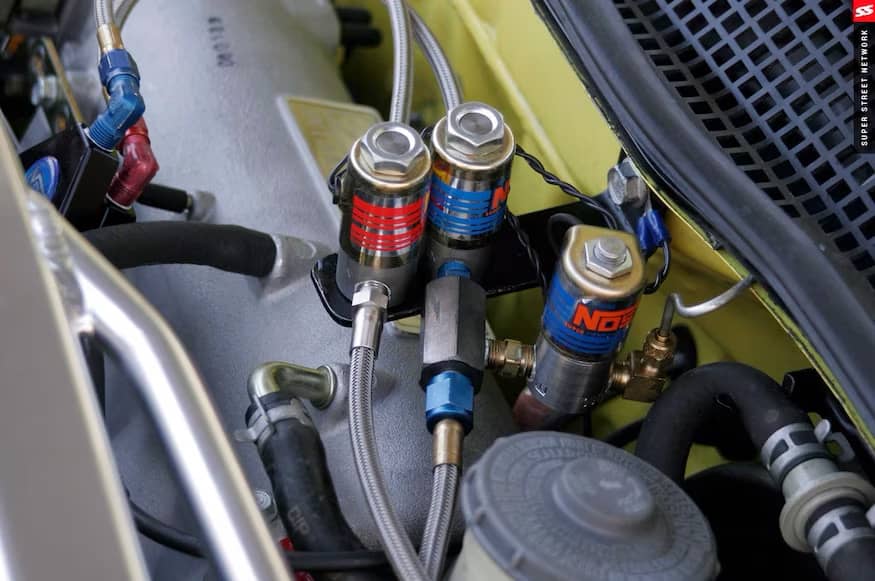
4. Gradual Delivery with Progressive Controllers:
- Progressive Activation: Progressive controllers allow for gradual NOS delivery, as opposed to a sudden surge. This not only enhances traction but also reduces stress on the drivetrain.
- Fine-Tuning: Using a progressive controller requires fine-tuning to ensure the power delivery matches your driving style and conditions.
5. Dyno Testing and Data Logging:
- Invaluable Tools: Utilize dyno testing and data logging to monitor and optimize your NOS system’s performance. These tools provide real-time data on engine behavior, helping you fine-tune with precision.
The Art of Optimization
Optimization is where the science of tuning meets the art of extracting every ounce of performance. Here’s how to elevate your NOS setup to the next level:
1. Calibration Consistency:
- Maintain Consistency: Once you’ve found the ideal calibration, stick to it. Consistency ensures that your NOS system delivers the same reliable performance every time.
- Record Keeping: Keep detailed records of your calibration settings and adjustments for reference and troubleshooting.
2. Safety Overrides:
- Safety First: Implement safety overrides like a window switch or wide-open throttle switch to prevent NOS activation under unfavorable conditions.
- Safety Checks: Periodically check these safety features to ensure they are functioning correctly.
3. Drivability and Control:
- Balancing Act: Achieve a balance between raw power and drivability. Your NOS system should enhance performance without compromising control.
- On-The-Fly Adjustability: Consider systems that offer on-the-fly adjustability, allowing you to fine-tune performance according to changing conditions.
4. Professional Consultation:
- Expert Advice: When in doubt, seek the guidance of professionals experienced in NOS tuning. They can provide invaluable insights and recommendations.
Conclusion
Tuning and optimizing a NOS system is a blend of artistry and precision. It demands an in-depth understanding of your vehicle, meticulous attention to detail, and a commitment to continuous improvement. When executed skillfully, tuning and optimization elevate NOS performance from exhilarating to extraordinary, ensuring that every press of the NOS button delivers an adrenaline-pumping experience on the road or track.
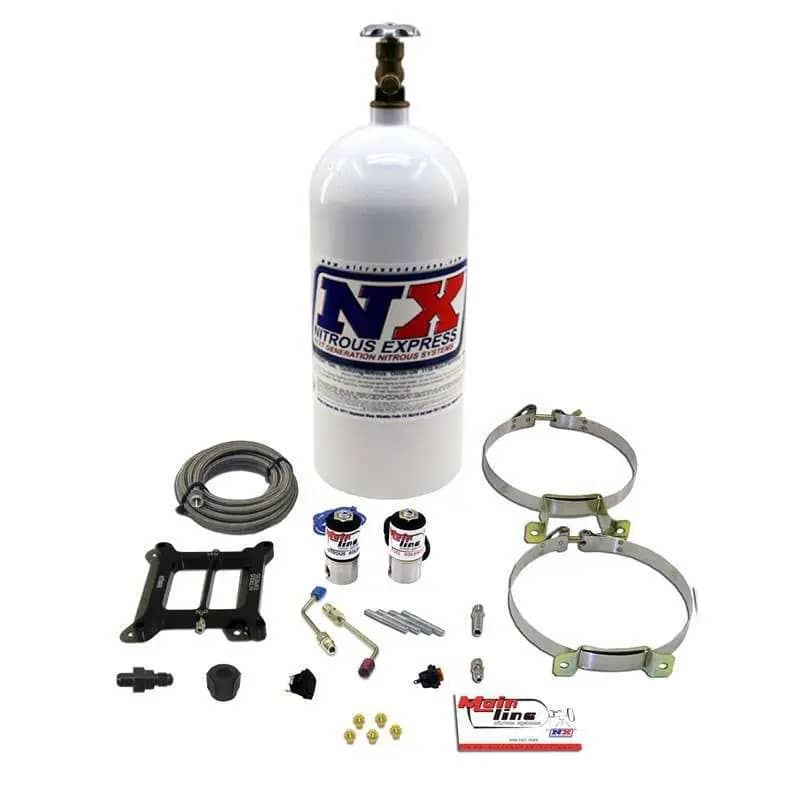
4. Environmental Impact and Alternative Approaches
NOS and the Environment: Exploring Eco-Friendly Alternatives and Responsible Practices
In a world increasingly concerned with environmental sustainability, the automotive community is not exempt from scrutiny. Nitrous Oxide Systems (NOS), known for their power-enhancing capabilities, have come under the spotlight for their environmental impact. In this article, we delve into the environmental aspects of NOS usage, explore eco-friendly alternatives, and discuss responsible practices for enthusiasts.
NOS and Environmental Concerns
Nitrous Oxide (N2O), a key component of NOS systems, is a potent greenhouse gas when released into the atmosphere. This raises legitimate concerns about its impact on the environment, particularly in a time when reducing greenhouse gas emissions is a global imperative. Here are some environmental considerations:
- Greenhouse Gas Emissions: N2O is a greenhouse gas that contributes to global warming when released into the atmosphere.
- Ecological Impact: The environmental impact of N2O emissions extends beyond global warming, affecting ecosystems and air quality.
Exploring Eco-Friendly Alternatives
In response to these concerns, enthusiasts and manufacturers are exploring eco-friendly alternatives to NOS systems. These alternatives aim to deliver performance gains without the associated environmental drawbacks:
1. Water-Methanol Injection:
- How It Works: Water-methanol injection injects a mixture of water and methanol into the intake tract. This reduces combustion temperatures and prevents detonation, similar to N2O.
- Environmental Benefit: Water-methanol injection does not release greenhouse gases into the atmosphere, making it a more environmentally responsible choice.
- Performance: It can offer performance gains while being eco-friendly.
2. Electric and Hybrid Integration:
- Power Synergy: Electric and hybrid vehicles offer instant torque and power. By integrating NOS systems with these alternative power sources, enthusiasts can enjoy performance enhancements without emissions.
- Sustainability: Electric and hybrid powertrains are inherently more eco-friendly, aligning with sustainability goals.
- Innovation: This integration represents the synergy between traditional performance technology and cutting-edge automotive advancements.
Responsible NOS Practices
While eco-friendly alternatives are promising, many enthusiasts still choose NOS for its unmatched power gains. For those who opt for NOS, responsible practices can help minimize its environmental impact:
1. Proper Disposal:
- Used Cartridges: Dispose of used NOS cartridges responsibly, following local recycling and disposal guidelines.
2. Controlled Environments:
- Track Usage: Whenever possible, restrict NOS usage to controlled environments like race tracks, where emissions can be managed.
- Avoid Street Racing: Avoid using NOS on public roads, where emissions can negatively impact air quality.

3. Offset Environmental Impact:
- Carbon Offsets: Some enthusiasts explore carbon offset programs to mitigate the environmental impact of N2O emissions. These programs support initiatives that reduce or capture greenhouse gases elsewhere.
4. Green Practices:
- Eco-Conscious Modifications: Consider modifications that improve fuel efficiency and reduce emissions to counteract the environmental impact of NOS.
Conclusion
The use of Nitrous Oxide Systems in the automotive world is at a crossroads, with environmentalist concerns prompting a reevaluation of traditional practices. Eco-friendly alternatives like water-methanol injection and electric/hybrid integration offer promising avenues for enthusiasts seeking both performance and sustainability. Additionally, responsible NOS practices, such as proper disposal and controlled usage, can help minimize the environmental impact of NOS systems. As the automotive community continues to evolve, the pursuit of performance may find new ways to coexist with responsible environmental responsibility, ensuring that enthusiasts can enjoy the thrill of speed while respecting God’s creation.
5. Racing and Competitive Scene
NOS in the Spotlight: Its Impact on Competitive Racing
The world of competitive racing is fueled by passion, precision, and the relentless pursuit of victory. In this high-stakes arena, even the slightest advantage can make all the difference. Nitrous Oxide Systems (NOS) have long played a significant role in competitive racing across various disciplines. This article explores how NOS systems influence the competitive racing scene and recounts iconic moments where NOS played a pivotal role.
NOS: The Competitive Edge
In competitive racing, where milliseconds determine winners and losers, NOS provides a compelling advantage. The instantaneous surge of power it delivers can be the key to success, whether on a drag strip, a drifting course, or an off-road trail. Here’s a closer look at how NOS influences different racing disciplines:
1. Drag Racing
- Launch Control: In drag racing, the initial acceleration off the starting line is critical. NOS provides an explosive burst of power, helping racers gain an early lead.
- Quarter-Mile Dominance: NOS-equipped cars have consistently shattered quarter-mile records, achieving incredible elapsed times that push the boundaries of what’s possible.
2. Drifting
- Precision Control: Drifting demands precise control and throttle modulation. NOS systems can help maintain speed through corners, allowing for seamless transitions and spectacular drift sequences.
- Visual Impact: The controlled use of NOS during a drift adds a visual spectacle to the sport, thrilling spectators and judges alike.
3. Off-Road Racing

- Terrain Mastery: Off-road races encompass diverse terrains, from deep mud to steep inclines. NOS provides the additional power needed to conquer these challenges.
- Desert Dominance: In desert racing, where high speeds are crucial, NOS can provide the extra horsepower required to surge ahead of the competition.
Iconic Moments in Racing History
NOS has been responsible for numerous iconic moments in racing history, showcasing its transformative power on the track. Here are a few standout examples:
1. The “Fast and Furious” Franchise
- Cinematic Impact: The “Fast and Furious” film series popularized NOS as a symbol of speed and excitement. The franchise’s depiction of NOS-powered street racing has left an indelible mark on popular culture.
2. Drag Racing Records
- Breaking Records: Over the years, NOS-equipped drag cars have consistently shattered records, achieving astonishing quarter-mile times that push the boundaries of what’s possible in the sport.
3. Drifting Spectacles
- Visual Mastery: Drifters like Ken Block have wowed audiences with stunning NOS-assisted sequences. The precise use of NOS during drifts adds an extra layer of visual excitement to the sport.
4. Off-Road Conquests
- Off-Road Prowess: In the world of off-road racing, NOS has been instrumental in helping vehicles conquer challenging terrains and achieve victory in grueling races.
Challenges and Regulations
While NOS undoubtedly provides a competitive edge, it also presents challenges and regulations in the racing world:
- Rule Variations: Different racing organizations and events have varying rules and regulations governing NOS usage. Racers must navigate these guidelines to ensure compliance.
- Traction Management: The sudden power surge from NOS can challenge a vehicle’s traction. Racers must master the art of managing wheel spin during NOS activation.
- Balancing Act: Achieving the right balance between power and control is essential. Overreliance on NOS can lead to handling issues and potential mishaps.
Conclusion
Nitrous Oxide Systems have left an indelible imprint on the world of competitive racing. From drag racing’s record-breaking quarter-mile times to the precision of drifting and the rugged terrain of off-road competitions, NOS systems continue to influence the competitive landscape. Iconic moments in racing history stand as a testament to the transformative power of NOS on the track. As racers push the boundaries of speed and performance, NOS remains a valuable tool in their quest for victory.
6. DIY vs. Professional Installation
Choosing the Right Path for Your NOS System
The world of automotive performance is rife with choices, and one crucial decision is whether to install your Nitrous Oxide System (NOS) yourself or opt for a professional installation. In this article, we explore the factors to consider when making this decision, the merits of both approaches, and how each can impact your NOS experience.
The DIY Enthusiast’s Path
For many automotive enthusiasts, the prospect of a DIY NOS installation holds a special allure. It’s a chance to get hands-on with your vehicle, deepen your understanding of its mechanics, and craft a system tailored to your preferences. Here are some key aspects of the DIY approach:
1. Educational Opportunity
- Hands-On Learning: DIY installation provides hands-on education in automotive systems, from fuel and ignition to electrical connections.
- Technical Mastery: You’ll gain a deeper understanding of how your NOS system works and how it integrates with your vehicle.
2. Cost Savings
- Budget-Friendly: DIY installations can be more cost-effective, as you only need to cover the cost of components and tools.
- Investment in Knowledge: Money spent on tools and equipment is an investment in your automotive knowledge and skill set.
3. Customization
- Tailored to Your Needs: DIY installations allow for customization, letting you fine-tune every aspect of your NOS system to meet your specific goals and preferences.
- Personal Touch: You have full control over the installation process, ensuring that your NOS system aligns perfectly with your vision.
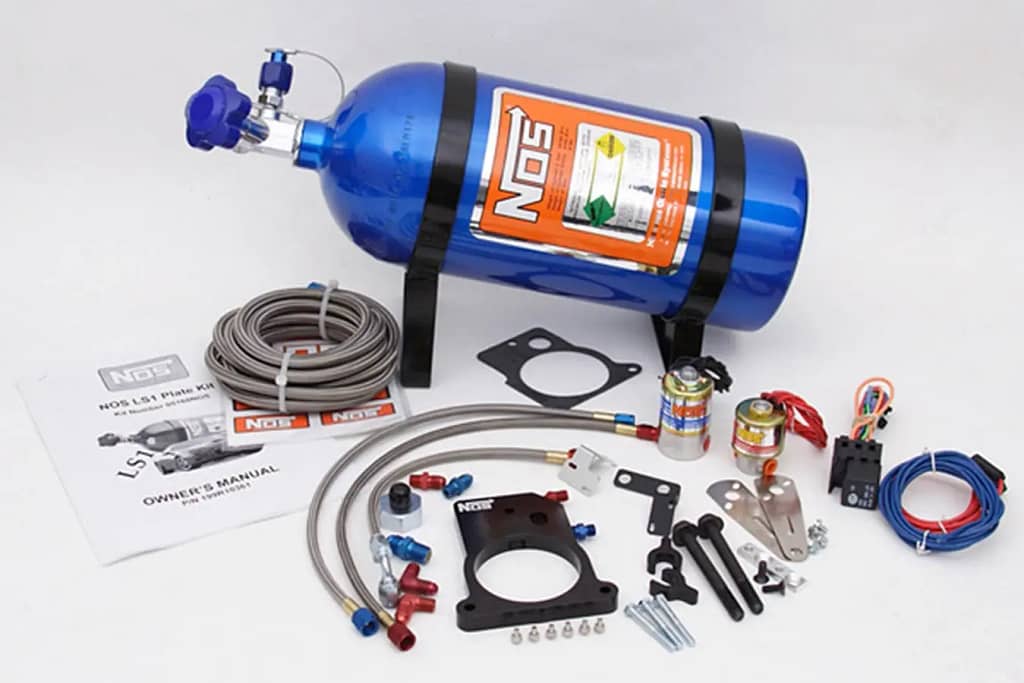
The Professional Touch
While DIY installations offer valuable learning experiences, professional installation services provide expertise, precision, and peace of mind. Here’s why many enthusiasts opt for professional installation:
1. Expertise and Experience
- Seasoned Professionals: Professional installers have the experience and training to execute a flawless installation.
- Precision Matters: Every aspect, from component placement to tuning, is carried out with precision, ensuring optimal performance and safety.
2. Safety Assurance
- Risk Mitigation: Professional installers are well-versed in safety protocols, reducing the risk of leaks, malfunctions, or improper installations.
- Peace of Mind: Knowing that your NOS system is professionally installed can provide peace of mind, especially for those new to NOS technology.
3. Time Savings
- Efficiency: Professionals can complete installations more quickly and efficiently, minimizing downtime for your vehicle.
- Minimized Errors: With their expertise, professionals are less likely to encounter errors or complications during the installation process.
Choosing the Right Path
The decision between a DIY installation and a professional installation ultimately hinges on several factors:
- Skill Level: Consider your level of technical expertise and familiarity with automotive systems. DIY installations require a higher level of technical skill.
- Budget: Assess your budget and whether it allows for professional installation costs. DIY installations can be more budget-friendly in terms of labor expenses.
- Time: Evaluate the time you can dedicate to the installation. DIY projects often take longer than professional installations.
- Risk Tolerance: Consider your willingness to take on the responsibility of a DIY installation. Are you comfortable with the potential risks and challenges?
Conclusion
Both DIY and professional installation have their merits in the world of NOS systems. DIY offers an educational journey, customization options, and cost savings, while professional installation provides expertise, safety assurance, and time efficiency. The choice ultimately depends on your skill level, budget, and comfort with the installation process. Regardless of your choice, the thrill of a properly installed NOS system awaits, promising a surge of power and excitement on the road or track.






7. Future Trends and Innovations
NOS Innovations: Exploring the Future Trends of Nitrous Oxide Systems
The world of Nitrous Oxide Systems (NOS) in automotive performance is not static; it’s a dynamic realm driven by innovation. In this article, we delve into the future trends and innovations that are set to reshape the landscape of NOS technology, enhancing its applications and ensuring its place at the forefront of automotive performance.
1. Integration with Alternative Powertrains
- Electric and Hybrid Synergy: As electric and hybrid vehicles gain popularity, integrating NOS with these alternative powertrains offers exciting possibilities. Electric and hybrid powertrains provide instant torque and acceleration, making them ideal partners for NOS systems.
- Performance and Sustainability: This integration marries sustainability with exhilaration, allowing for instantaneous power enhancements without emissions.
- Innovation Potential: The fusion of traditional NOS technology with cutting-edge electric and hybrid systems represents an innovative frontier in automotive performance.
2. Advancements in NOS Technology
- Efficiency Improvements: Research and development efforts are likely to focus on improving the efficiency and safety of NOS systems.
- User-Friendly Designs: Manufacturers may aim to create more user-friendly NOS kits, simplifying the installation process for enthusiasts.
- Tailored Solutions: Custom NOS systems designed for specific vehicle models may become more common, ensuring a seamless integration process.

3. Crowdsourced Knowledge Sharing:
- Enthusiast Collaboration: The NOS community is likely to play an increasingly significant role in driving innovation. Enthusiasts, engineers, and manufacturers often collaborate to develop new components, tuning techniques, and safety measures.
- Knowledge-Sharing Platforms: Crowdsourced knowledge-sharing platforms can facilitate the exchange of best practices, benefiting newcomers and seasoned NOS users alike.
- Collective Wisdom: These collaborative efforts tap into the collective wisdom of the NOS community, fostering innovation and improvement.
4. Environmental Responsibility
- Eco-Friendly NOS Systems: Manufacturers may explore the development of NOS systems with reduced greenhouse gas emissions, addressing environmental concerns.
- Carbon Offset Practices: Enthusiasts and manufacturers may adopt carbon offset practices to mitigate the environmental impact of N2O emissions.
- Sustainability Initiatives: The NOS community may become increasingly involved in sustainability initiatives, aligning with broader efforts to reduce the automotive industry’s carbon footprint.
Conclusion
The future of Nitrous Oxide Systems in automotive performance is teeming with potential. As the automotive world evolves, so too does the technology that powers it. Integrating NOS with alternative powertrains, advancing safety and efficiency, and championing environmental responsibility are among the exciting trends on the horizon.

Enthusiasts and manufacturers alike will continue to push the boundaries of NOS technology, ensuring that it remains a driving force in the pursuit of automotive excellence. Whether it’s the thrill of acceleration on a drag strip, the precision of drifting, or the rugged challenges of off-road racing, NOS systems will continue to play a pivotal role in delivering power, excitement, and innovation to automotive enthusiasts worldwide.
Final Note
In conclusion, the world of Nitrous Oxide Systems (NOS) in automotive performance is a dynamic and evolving landscape, shaped by innovation, technology, and the passion of enthusiasts. Here, we’ve explored seven key facets that define the past, present, and future of NOS systems:

- Mechanics Unveiled: We’ve delved into the mechanics of NOS, unveiling the science behind its power-boosting capabilities. N2O, phase change, and oxygen enrichment were all examined, providing a solid foundation for understanding NOS.
- Components at Play: We’ve discussed the crucial components that make NOS systems work, from the high-pressure tank to solenoids, delivery lines, and nozzles. Each piece plays a vital role in delivering that exhilarating surge of power.
- Tuning Perfection: The art and science of tuning NOS systems were explored, highlighting the importance of shot size calibration, fuel enrichment, ignition timing, and progressive controllers to maximize performance.
- Eco-Friendly Exploration: Environmental responsibility was brought to the forefront, with a look at eco-friendly alternatives to NOS systems, such as water-methanol injection and electric/hybrid integration, as well as responsible practices for mitigating N2O emissions.
- Competitive Racing Impact: NOS’s role in competitive racing was examined, showcasing its influence across various disciplines like drag racing, drifting, and off-road racing. Iconic moments in racing history illuminated its transformative power.
- DIY vs. Professional Installation: The decision-making process between DIY and professional installation was discussed, weighing the merits of hands-on learning, cost savings, and customization against the expertise, safety assurance, and efficiency of professional installers.
- Future Trends and Innovations: Looking ahead, we explored future trends in NOS technology, including integration with alternative powertrains, advancements in NOS technology, crowdsourced knowledge sharing, and environmental responsibility. These trends promise to shape the future of NOS in automotive performance.
As the automotive world continues to evolve, NOS systems remain a potent force, offering power, excitement, and innovation to enthusiasts and racers alike. Whether it’s the thrill of acceleration, the precision of control, or the pursuit of sustainability, NOS technology adapts and thrives, ensuring its enduring place in the realm of automotive excellence.
We have several Tips articles and videos on the subject of providing useful tips and tricks to address common problems to fix, and upgrades to improve your vehicle’s performance, reliability, and longevity.
Tips For Upgrading Your Vehicle
- What Are The Most Important Upgrades You Can Do To Your Car?
- Install a performance exhaust system
- Upgrade Your Air Filter
- Cold Air Intake System
- Spark plugs and wires
- Fuel System
- Change Your Oil Regularly
- Performance Chip
- Performance Tires
- Performance Camshaft
- Aftermarket Cylinder Heads
- Replace Your Brake Pads and Rotors
- Power Adders (Turbocharger or Supercharger)
- Nitrous Oxide System
- Rebuild or Replace your Engine

